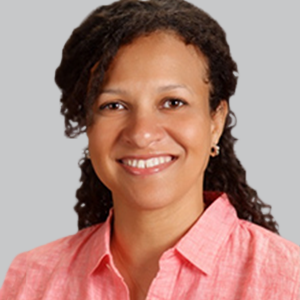Article
New Guidelines for Addressing Sleep Disturbance in Autism Spectrum Disorder
Author(s):
Following the 2011 guideline development process, this 2020 guideline focused on addressing a number of types of sleep disturbance in children and adolescents with autism spectrum disorder.
Ashura Williams Buckley, MD, National Institute of Mental Health

Ashura Williams Buckley, MD
The American Academy of Neurology (AAN) has published a new practice guideline update focused on addressing sleep disturbance and challenges in children and adolescents with autism spectrum disorder (ASD).1
Its major recommendations included assessment of coexisting conditions, counseling of parents on sleep strategies, when treatment with melatonin is relevant, and behavioral strategies, among others. The guideline was endorsed by the American Academy of Sleep Medicine, Autism Speaks, the Child Neurology Society, and the Society for Developmental and Behavioral Pediatrics. Additionally, the American Epilepsy Society affirmed the value of the guideline.2
While up to 40% of children and teens in the general population will have sleep problems at some point during their childhood, such problems usually lessen with age,” lead author Ashura Williams Buckley, MD, National Institute of Mental Health, said in a statement. “For children and teens with autism, sleep problems are more common and more likely to persist, resulting in poor health and poor quality of life. Some sleep problems may be directly related to autism, but others are not.”
“Regardless, autism symptoms may make sleep problems worse,” she added. The group provided this blueprint following the 2011 guideline development process, as amended, included studies through December 2017. They provided recommendations based on evidence, related evidence, principles of care, and inferences.
READ MORE: Undiagnosed OSA Linked to High Health Care Costs and Utilization
In total, 4 variations of sleep disturbances were addressed by the guidelines—bedtime resistance, sleep onset latency, sleeping continuity and total time, and daytime behavior linked to insufficient sleep.
Ultimately, the recommendations were to first ascertain if the sleep problems are caused by medication regimens or other existing medical conditions and whether those can be addressed. If ruled out, Williams Buckley and colleagues wrote that behaviorally based sleep problems should be addressed by a number of behavioral treatments. Those suggestions included consistent sleep routine with defined sleep and wake times, lining up bedtime with the child’s natural sleepiness, and disallowing electronic devices such as computers or televisions close to bedtime.
“Behavior-modification strategies are a good place to start because they do not cost anything, there are no side effects and they have been shown to work for some people,” said Williams Buckley.
If the behavioral strategies are ineffective, however, the group recommended that clinicians should offer melatonin—as long as contributing coexisting conditions and use of concomitant medications have been addressed—starting treatment with a low dose. They noted that pharmaceutical-grade melatonin, if available, should be utilized, with necessary counseling of children and adolescents, and their parents, on the potential adverse effects of its use, particularly due to the lack of long-term safety data.
Additionally, the group opposed the use of weighted blankets or specialized mattress technology for improving disrupted sleep as a treatment due to a lack of available evidence. Although, they noted that if patients or their families inquire about weighted blankets, clinicians should note that no serious adverse events have been noted with blanket use and that they can be a reasonable nonpharmacologic approach for some.
“Sleep problems can make behavioral issues in children and teens with autism even worse,” said Williams Buckley. “That’s why it is important for parents and caregivers to work with healthcare providers to find a way to improve a child’s sleep because we know that good quality sleep can improve overall health and quality of life in all children.”
Read the entire guideline here.
REFERENCES
1. Buckley AW, Hirtz D, Oskoui M, et al. Practice guideline: Treatment for insomnia and disrupted sleep behavior in children and adolescents with autism spectrum disorder: Report of the Guideline Development, Dissemination, and Implementation Subcommittee of the American Academy of Neurology. Neurology. 2020;94:393-405. doi: 10.1212/WNL.0000000000009033
2. Sleep Problems in Children, Teens with Autism Are Focus of New AAN Guideline [press release]. Minneapolis, MN: American Academy of Neurology; Published February 12, 2020. eurekalert.org/pub_releases/2020-02/aaon-spi020920.php. Accessed February 12, 2020.





